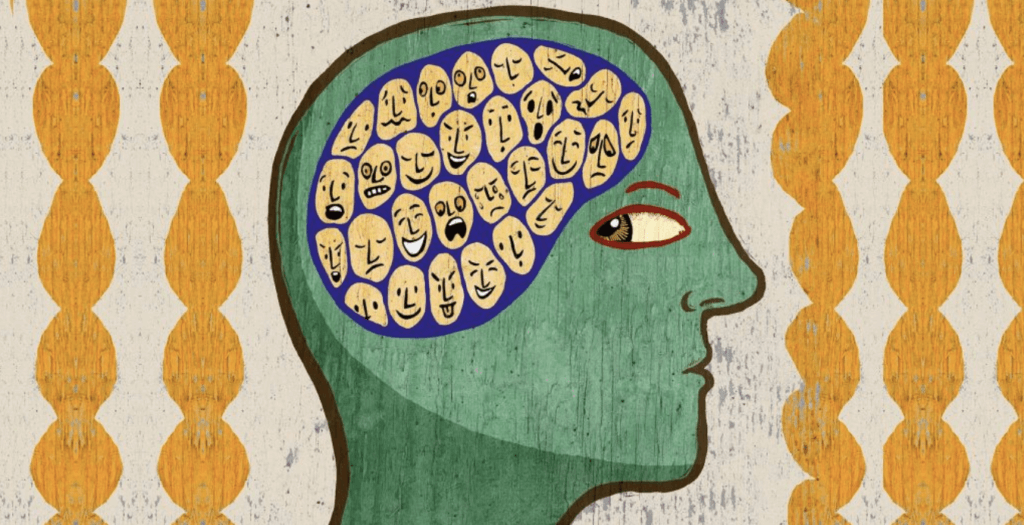
What is a Systemic Constellation?
Family Constellations, also known as Systemic Constellations, is a transpersonal, therapeutic method which draws on elements of family systems therapy (Moreno, Satir, Boszormenyi-Nagy), existential phenomenology (Brentano, Husserl, Heidegger) and the indigenous ancestral beliefs (Zulu, Buddhism-Taoism-Confucianism, Shamanic). Family constellation is the term coined by Adler, elaborated by Dreikurs and brought to public knowledge by Bert Hellinger to represent the family system, including parents, siblings, grandparents and others in the family of origin, living or dead, as well as people who influenced their system (in a positive and negative way).
Systemic Work is an illuminating process of highlighted patterns that direct behaviour of family members sometimes across generations. Its aim is to bring insights to hidden dynamics that affect the family and its members.
During the process, a client hardly speaks as they observe the process unfolding for them through representatives of his/her family members. Representatives are chosen by the client and facilitator based on the issue of the client. The process can be done with no content sharing if the issue is too sensitive. In that case, representatives will not know what or who they represent but they still will have insights from the work that can be very helpful to the client (Weinhold et al., 2013).
How do Systemic Constellations work?

The process evolved from Moreno’s (1945) psychodrama, Satir’s (1987) family sculpturing and Boszormenyi-Nagy and Spark’s (1973) invisible loyalties.
In the silence and stillness of the process, the representatives tune into the field of the client by allowing sensations to lead rather than thoughts. Sheldrake (1995) describes this phenomenon as a morpho-genetic field that governs the memory formation across generations and any person can tap into the field for gathering insights that can be applicable to their life.
How shall I prepare for the Systemic Work?
It’s helpful to begin with by settling yourself and calming your mind. Take a few deep breathes and sit comfortably in the space where you can focus without distractions. Space where you can feel safe and open with your thoughts and feelings.
Take some time to scan your body and notice where you feel any tensions and breathe through them. Relax your shoulders, your tongue, your jaw and place your feet on the ground with your spine straight.
Bring to mind your aspirations and intentions for the work you want to do. Remind yourself why you are where you and where you want to be. How you want to feel. What you would like to release. Whatever comes to mind just let it flow.
Take a large sheet a paper and a pen and draw a family map (see the next section on how to do it). If you don’t know much about your grandparents and their lives, I suggest connecting with someone who knows/knew about them and can share information about their relationships and significant events with you.
How to do the Family Map?
A simple way of drawing a Family Map is the following.
For female figures, you can draw circles for males – squares to make it visually distinguishable.
For relationships that are good, positive and stable, you can mark them with a bold line
For relationships that are distant, absent or not so strong, mark them with a broken line
– – – – – – – – – – –
For relationships that are turbulent and conflictual, mark them with a zigzag line
/\/\/\/\/\/\/\/\/\
Start with yourself and your immediate family, i.e. biological mother, father and siblings. Write a name, year of birth and a couple of characteristics of the person. Mark relationships between each member of the family by choosing from the above lines. Remember it’s just a simple visual representation of the dynamics in your family to see any visual trends or patterns. You can bring this map to your workshop or share with your trainer.
Here is an example of the Family Map video to help you create one of your own
How often should I do Systemic Work?
As with any practice, this work requires repetition to make the best impact on the behaviour of the person who is doing it. It’s beneficial to allow for the work to settle and make inner shifts and bring new insights, for at least a week, before you start doing another piece of work. If you have already looked into one aspect of your life, it’s better to look into another one or participate as a representative or observer.
Can I work on the same issue many times?
We all have some issues that are stronger than others. Sometimes we want to work on them consistently or we get scared of opening the ‘pandora box’ and don’t want to work on them for a long time. A general recommendation would be to have a sense of your readiness to work on the issue and give yourself time to have an effect from the constellation work, at least a couple of weeks.
Extreme cases would be to do a constellation on the same issue every week or not to revisit it at all after doing it once. Doing systemic constellations on a monthly basis or a quarterly basis ‘helps build a muscle’ to become more aware of your inner world and get better insights into your family system.
Challenges in Systemic Constellations

I had trauma during my childhood. Is it safe for me to do Systemic Work?
Many people who choose to do the Systemic Constellation or Systemic Repatterning Work experienced trauma in their life. In fact, most people on this planet have experienced trauma across generations. Generational trauma is something that gets illuminated through the Systemic Work and there is an opportunity to heal it (Wolynn, 2017). Although many of us have consciously forgotten about traumatic experiences, unconsciously the body remembers and ‘keeps scores’ of all events that happened with us, to protect us from emotional distress. In events when we get triggered the patterns of behaviour can be observed and repatterned later on in the Systemic Work (Van Der Kolk, 2015).
What to do after the Systemic Work?
It depends on the intensity of the experience you had and the release of it. Some people take a lot of time to self-care and integrate afterwards, some take very little time and go about their work as usual. My suggestion is to dedicate some rest time after the Work (2-3 hours and good night sleep), make notes of your feelings and thoughts. Express them by drawing, painting, dancing, singing, writing, playing or listening to music or anything else creative and expressive that appeals to you. Walking in nature, breathing through, taking a hot bath or meditation can help you settle and integrate the insights.
What if after Systemic Constellations I have a physical illness or negative emotions that persist?
In cases where the body processes by detoxing or symptoms exacerbate, it is recommended to allow time and space for the cleansing to happen. It could be an emotional outpouring or physical manifestation of the ailment. If the symptoms persist, you are advised to contact your facilitator and explain what you are going through. Generally, a healthy lifestyle, hot/cold shower and exercise would bring the body to the homeostasis. In case of a serious ailment or any serious conditions worsening, you are advised to contact your doctor or GP.
Books on Systemic Psychology and Family Reconstruction
A comprehensive model for psychotherapy and coaching in relationship with oneself, one’s family, and one’s community. Virginia believed the well-lived life to be a real possibility and a basic human right even in case of traumas or life challenges. She had discovered key universal principles in her fifty years of professional experience. A ‘mother of systemic family therapy’ she is one of the most influential figures in modern psychology and coaching, including Neuro-Linguistic Programming.
2. The Body Keeps the Score: Brain, Mind, and Body in the Healing of Trauma by Bessel van der Kolk
Psychiatrist Bessel van der Kolk takes a whole-body approach to trauma healing and the differences it means for real people. A world-renowned posttraumatic stress specialist, van der Kolk says traumas large and small impact almost everyone, directly or indirectly. The book charts decades of research and clinical work with trauma survivors and examines how such events can rewire the brain, altering personalities and behaviour. The author uses case studies and personal stories to show the changing paradigms in behavioural health.
3. Internal Family Systems by Richard Schwarts and Martha Sweezy
This is the authoritative presentation of Internal Family Systems (IFS) therapy, which is taught and practised around the world. IFS reveals how the subpersonalities or “parts” of each individual’s psyche relate to each other like members of a family, and how–just as in a family–polarization among parts can lead to emotional suffering. IFS originator Richard Schwartz and master clinician Martha Sweezy explain core concepts and provide practical guidelines for implementing IFS with clients who are struggling with trauma, anxiety, depression, eating disorders, addiction, and other behavioural problems. They also address strategies for treating families and couples. IFS therapy is listed in SAMHSA’s National Registry of Evidence-Based Programs and Practices.
4. Love’s Hidden Symmetry by Bert Hellinger, Gunthard Weber and Hunter Beaumont
‘Love’s Hidden Symmetry’ is a book to be read slowly – and then to be read again and again. Here is an opportunity to discover the work of Bert Hellinger, whose generative approach to intervening in systems has already reached across Europe into the hearts and minds of a diverse therapeutic community. A lively blend of narrative, storytelling, transcript material, and poetic imagery is invoked to describe and to demonstrate, what Hellinger calls ‘the orders of love’ and how disturbances in the orders of love create a legacy that must be reckoned with for generations to come. But these deeply embedded forces in the family system can be harnessed for healing once they are acknowledged, respected, and gently redirected. Hellinger’s basic tool for helping family members restore balance is the use of family constellations. Hellinger, along with co-authors Gunthard Weber and Hunter Beaumont, clarifies how this method can be refined and expanded to galvanize the energy of everyone involved toward a greater sense of well- being. The transcripts included in the book help to capture the extraordinary potential of working appropriately with family constellations. The profound suffering of many of these individuals is more than matched by the opportunity for peace that is revealed in the therapeutic work.
5. The Polyvagal Theory: Neurophysiological Foundations of Emotions, Attachment, Communication, and Self-regulation by Stephen Porges
A collection of groundbreaking research by a leading figure in neuroscience. This book compiles, for the first time, Stephen W. Porges’s decades of research. A leading expert in developmental psychophysiology and developmental behavioural neuroscience, Porges is the mind behind the groundbreaking Polyvagal Theory, which has startling implications for the treatment of anxiety, depression, trauma, and autism. Adopted by clinicians around the world, the Polyvagal Theory has provided exciting new insights into the way our autonomic nervous system unconsciously mediates social engagement, trust, and intimacy.
References
Sheldrake, R. (1995). The presence of the past: Morphic resonance and the habits of nature. Rochester, VT: Park Street Press
Moreno, J.L. (1945). Psychodrama. New York: Beacon.
Satir, V. (1987). Going beyond the obvious: the psychotherapeutic journey. In J. Zeig (Ed.) Evolution of psychotherapy (pp. 58-68). New York: Brunner/Mazel.
Sheldrake, R. (1995). The presence of the past: morphic resonance and the habits of nature. Rochester, VT: Park Street Press.
Van der Kolk, B. (2015). The body keeps the score: mind, brain and body in the transformation of trauma. Penguin Press.
Weinhold, J., Hunger, C., Bornhäuser, A., Link, L., Rochon, W., Wild, B., & Schweitzer, J. (2013). Family constellation seminars improve psychological functioning in a general population sample: Results of a randomized controlled trial. Journal of Counseling Psychology, 60(4), 601–609. https://doi.org/10.1037/a0033539.
Wolynn, M. (2017). It didn’t start with you: how inherited trauma shapes who you are and how to end this cycle. Penguin Press.